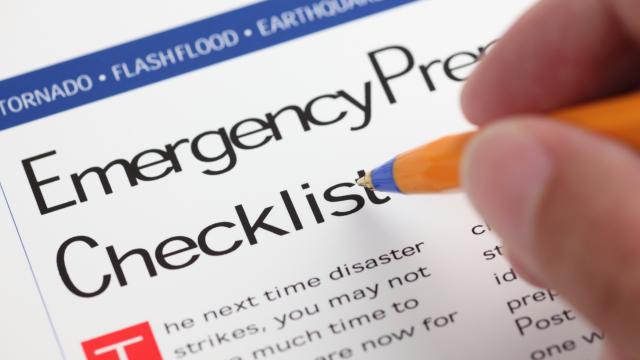September is National Preparedness Month, and a great time to review your business plan for unforeseen emergencies. Facility security and emergency preparedness are critical issues. Although no amount of planning can stop all potential threats, it's important to have steps in placez to ensure the safety of your staff and facility in the event of an emergency. Proper planning also helps you resume operations more quickly and with fewer problems.
Secure your building and physical assets
Take the following precautions recommended by the U.S. Department of Homeland Security to protect your facility:
- Install fire extinguishers and smoke detectors in appropriate places.
- Make sure emergency routes are clearly marked, along with critical utility information. Provide a copy of the information to firefighters and other first responders in the event of a disaster.
- Keep copies of these documents, along with your emergency plan, readily available in an emergency supply kit.
Install automatic fire sprinklers, alarm systems, closed-circuit TV, access control or other security systems if necessary. - Establish appropriate security measures to prevent unauthorized access to the facility.
Identify all essential equipment needed to keep your business open:
- Develop a plan for repairing or replacing damaged equipment that's vital to operations.
- Identify more than one supplier who can replace or repair your equipment.
- Store extra supplies, materials and equipment for use in an emergency.
Create an alternate plan in case an emergency renders your building inaccessible:
- Determine whether your business can be run from a different location.
- Initiate agreements with other organizations to use their facilities in case your location is inaccessible.
Identify and comply with all applicable codes and safety regulations. - Contact your insurance provider about the impact these precautions may have on your policy.
Be sure to include local emergency response resources in your plan available through the Los Angeles Emergency Management Department.
Staying in business during an outage
Your business depends on electricity, gas, telecommunications and other utilities. Although these services are generally reliable, outages can happen. Prepare for extended disruptions and install a backup generator to provide power during an outage.
Safety is critical. Operate generators safely according to manufacturer's guidelines and LADWP’s requirements. Never connect generators to your electrical system; they can backfeed and endanger lineworkers. Thus, LADWP has specific interconnection requirements that must be complied with for all interconnected generators, and all generating systems shall be connected on the load side of the customer’s meter switch (main service disconnect device). Before implementing an interconnected, emergency, or standby generator, contact the Service Planning Connection Center by calling 213-EMPOWER or (213) 367-6937, for safety and information on additional requirements.
September 2023 Empowering Small Business
LADWP's monthly Empowering Small Business Newsletter helps inform industry-specific small business customers about LADWP news, conservation programs and ways to save on their bill.
Full Newsletter